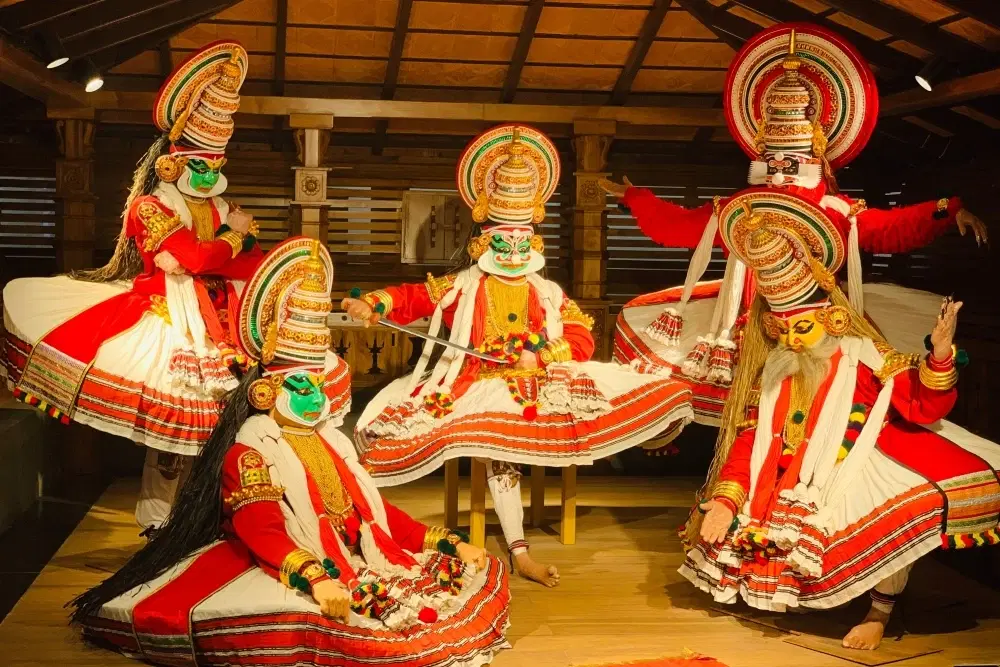
Hotels
•04 min read

Imagine the rhythmic beats of drums echoing across the serene islands of Lakshadweep—this is where tradition meets artistry. The unique cultural dance forms of these islands tell stories of rich heritage and deep-rooted community values. In this blog post, we explore lakshadweep dance and answer common questions about this vibrant art form. You will learn about the traditional dances of Lakshadweep, their history, and how music and dance celebrate island life.
Lakshadweep dance is a beautiful reflection of the islands' cultural diversity. The dance forms are influenced by the geography and history of the archipelago. They capture the spirit of island life and tell tales of community, resilience, and celebration. Every step and movement in these lakshadweep performing arts echoes centuries of tradition. These traditional dances of Lakshadweep carry the soul of the islands, inviting every onlooker into their magical world.
Dance and music in Lakshadweep share a close bond. Traditional instruments and folk tunes are used to create an atmosphere of joy and unity. Music helps set the pace for the dance and brings out its expressive power. This relationship enhances the overall experience of the lakshadweep dance and highlights the importance of musical rhythm in every performance. The coordinated energy of folk dances of Lakshadweep is a celebration of life and art intertwined.
Kolkali is one of the most popular examples of lakshadweep dance. This rhythmic folk dance is known for its lively stick movements and syncopated beats. Kolkali plays an important role during community celebrations and festivals. It is a dance that brings people together in joyous unison. The synchronized movements of the dancers are a testament to the island's artistic spirit and a vivid portrayal of lakshadweep cultural dance forms.
Parichakali is a dance that celebrates strength and courage. It draws inspiration from martial traditions and does more than entertain—it tells a story of valor. This performing art form uses vigorous and deliberate movements to symbolize unity and perseverance. Every performance of Parichakali exudes a sense of pride and community determination. It is a clear reminder of the island's past struggles and present spirit, solidifying its place among lakshadweep heritage dance styles.

Unique to Minicoy Island, the Lava dance shines with exceptional energy and charm. This dance is more than a series of steps—it is a celebration of life. The performers wear vibrant costumes that add a splash of color and excitement to the routines. Lava dance is often performed during local festivals and community gatherings. Its distinct style separates it from other traditional dances of Lakshadweep and underscores the island's rich artistic legacy.
Dance is a vital part of festival celebrations in Lakshadweep. During events like Eid and local celebrations, performances are a time-honored tradition. The dance forms help unite the community by reinforcing cultural bonds and creating shared memories. These lakshadweep festival dances are a powerful expression of the island's identity and a way to pass down traditions. They remind the people of their history and the importance of celebrating together.
Tribal dances in Lakshadweep hold a special place in the realm of island dance traditions. These dances showcase the indigenous roots of the local communities. With earthy rhythms and spontaneous expressions, they capture the natural beauty and primitive artistry of the islands. Tribal dances serve as both a reminder and a living example of the culture that binds the community together. They form an essential part of lakshadweep art and culture.
The performing arts continue to be alive and vibrant in Lakshadweep. Traditional dances, music, and rituals are celebrated to keep the island’s culture intact. Despite the pull of modern influences, efforts are in place to maintain these art forms. Lakshadweep art and culture thrive as local communities honor their history. These events and festivals help keep the artistic spirit of the islands fresh and ever-evolving.
Local communities work passionately to pass these traditions on to future generations. Cultural institutions and community events are key in teaching lakshadweep dance to the young. Many traditional practices are shared during festivals and local gatherings. This dedication to keeping the traditions alive is visible in every performance. The legacy of the island's performing arts continues to grow and inspire, forming a bridge between past generations and the future.
Insight Corner: Did You Know? "Many of Lakshadweep's dance forms, such as Kolkali and Parichakali, are deeply rooted in the island's history and were traditionally performed during communal gatherings to celebrate unity and resilience."

Kolkali is one of the most famous dances of Lakshadweep. It is known for its rhythmic stick movements and synchronized group performances.
Parichakali is a traditional dance that features martial art-inspired moves. It symbolizes valor and strength while reflecting the island's rich history.
Attam stands for graceful dance forms performed during festive occasions. It highlights the elegance of the performers and the beauty of lakshadweep cultural dance forms.
Lava dance is special to Minicoy Island. It is marked by unique costumes and vibrant energy, setting it apart in the realm of lakshadweep festival dances.
They preserve cultural identity and nurture community bonds. In Lakshadweep, music and dance pass down traditions and celebrate unity.
The traditional dances of Lakshadweep are a vibrant expression of the island's cultural heritage. Each form, from Kolkali to Lava, tells a unique story of community life, history, and art. Lakshadweep dance is a journey into the heart of the islands, where every movement celebrates life, unity, and tradition. The blend of music and dance connects the past with the present, making every performance a live narration of an enduring legacy. Through local festivals and community events, the dance forms continue to pave the way for future generations to appreciate their rich heritage. Embrace the journey of exploring Lakshadweep's dance traditions and let the island's rhythm inspire your own story.